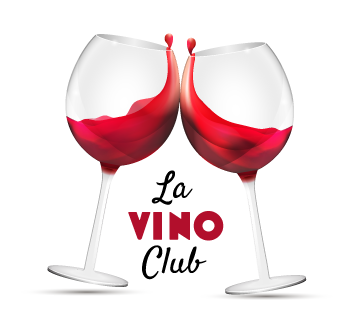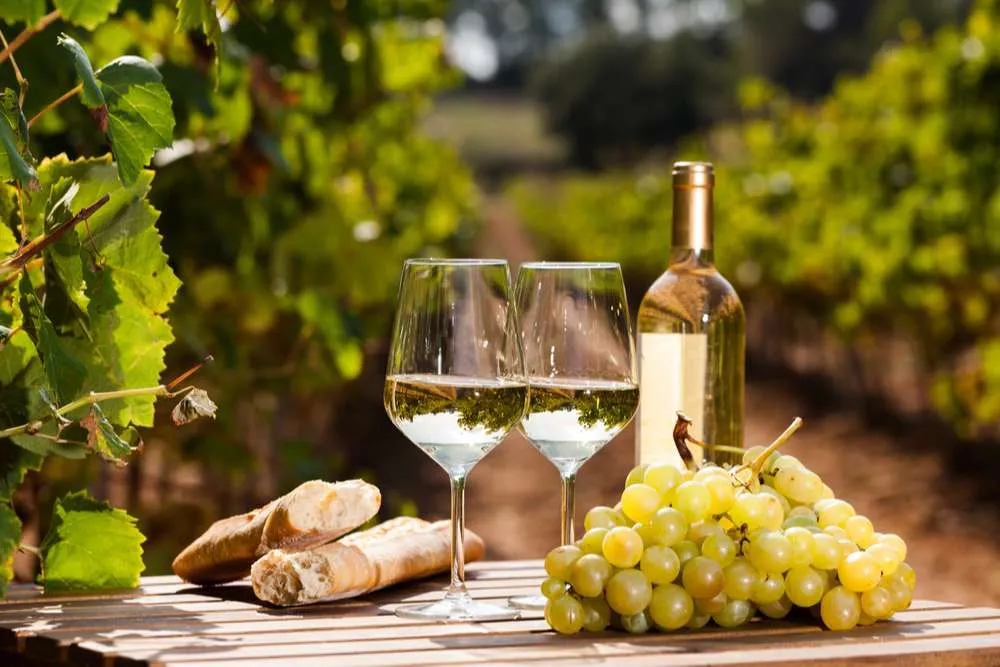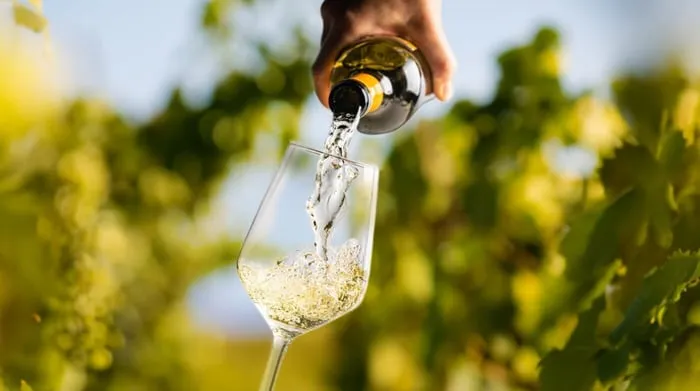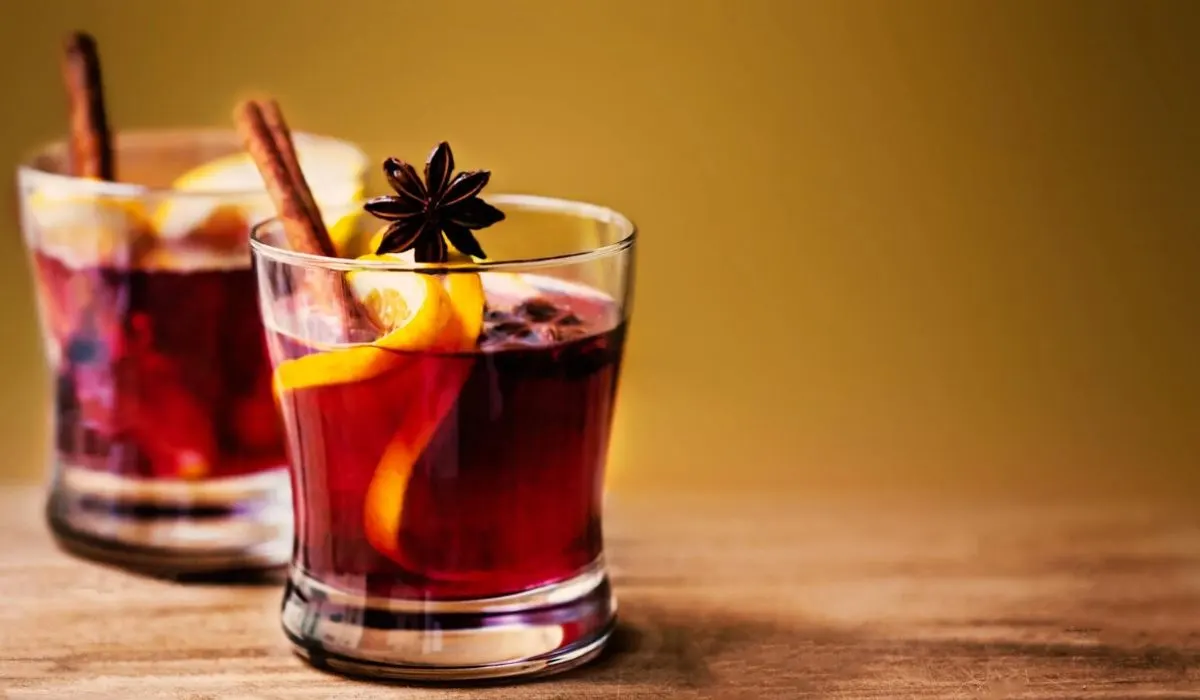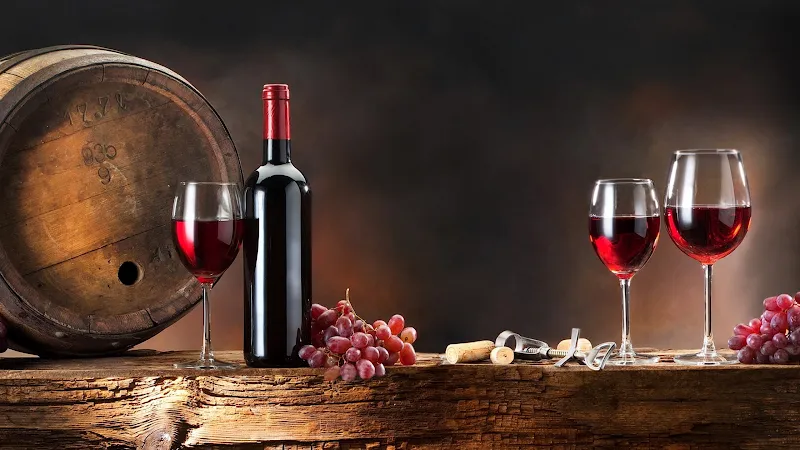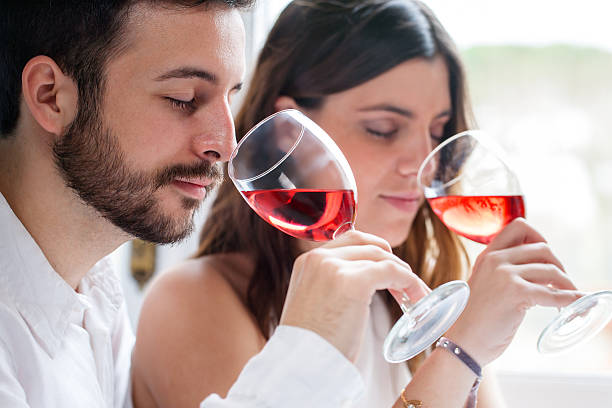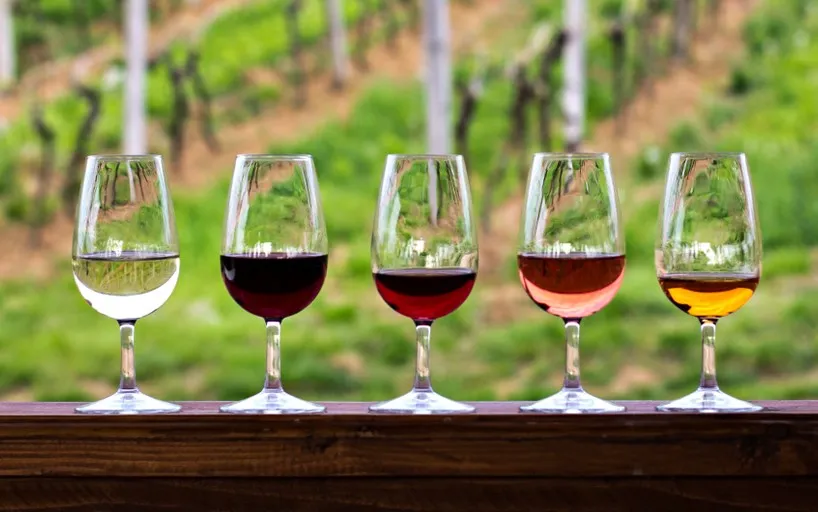By Rashmi Goel
In the world of wine, Châteauneuf-du-Pape is a famous name. Located in the south of the Rhône Valley, the region consists of a small village (also called Châteauneuf-du-Pape). There are many vineyards here, as well as stony, sandy soils, scrubland, and of course, sun-baked land. There is a rich history in the region that connects Châteauneuf-du-Pape with Avignon, which is famous for being the seat of several Catholic Popes.
In Châteauneuf-du-Pape essentially means "The Pope's New Castle". Avignon was the residence of Pope John XXII, who decided that this small village would make a nice place for him to live in the 14th century. It was with the construction of the Pope's castle that the region began to record its history. In the village, wine-making dates back much further than the castle's construction, but it was this that brought the region to the forefront of viticulture.
Within a century, the castle was abandoned, and only a few remnants are left. Despite this, grape cultivation remained an important industry in the region. A small step forward by Baron Le Roy in the 1930s led to a giant leap for Châteauneuf-du-Pape. In the region's noble families, Baron Le Roy married a viticulturist and spearheaded the AOC system's development. It was Châteauneuf-du-Pape that set the precedent for wine quality improvement by defining the region where grapes could be sourced from. Having been the first country in Europe to do this, Châteauneuf-du-Pape is not only the first AOC appellation in France but in the entire world.
Here Are Some Things You Need To Know About Châteauneuf-Du-Pape
- Among the things that make Châteauneuf-du-Pape so unique is that it was the first region to introduce the concept of "appellations", which protects quality by only sourcing grapes from a small, well-defined area. Forging the way for the rest of France, it became the first AOC region in 1936.
- Wines from Châteauneuf-du-Pape can be red or white, but its red blends are best known for being made from Grenache grapes. They tend to be full-bodied, bold reds with strong red and black fruit flavors accompanied by earthy and herbal notes.
- For Châteauneuf-du-Pape, 13 grape varieties are allowed, 9 red and 4 white. Occasionally, white varietals are included in red blends. A total of 13 grape varietals are used: Grenache, Syrah, Mourvèdre, Cinsault, Bourboulenc, Roussanne, Counoise, Clairette, Vaccarèse, Muscardin, Picpoul, Terret Noir, and Picardan.
- Châteauneuf-du-Pape comes in almost uncountable varieties. There is no restriction on the types of grapes that can be grown. It's possible to buy a bottle that contains all 13! Another aspect that makes Châteauneuf-du-Pape wines so special is their level of mystery. The appellation's red blends are permitted to use 13 grape varieties, but their names are not required to appear on the labels. The producers of many delicious blends keep their blends a secret, so no one else knows about them.
Chateauneuf Du Pape Wine Tasting
Red wines make up about 90% of Châteauneuf-du-Pape's production. Châteauneuf-du-Pape wines are characterized by the dominating grape, Grenache. The wines are delicious, somehow familiar, and comforting. In the wine world, Châteauneuf-du-Pape serves as a gateway for many. It is likely that once you taste the wines of this region, you will be hooked.
There is a sense of earthy herbaceousness, ripe red fruit, soft spices, and a warmth inherently associated with Châteauneuf-du-Pape. They are enticing, tasty, and approachable. Châteauneuf-du-Pape wines are known for their earthy, herbaceous side. In Provence, it's called "garrigue," which is low-lying, dry brush and scrubland. It is also believed that these wines have a warm, inviting feel due to the "galets roulés" that can be found in the region's vineyards. In the day, Galets Roulés give off heat that passes on to the vines at night, as they are flat and large.
There is a great deal of variety within those classic flavors, given that Châteauneuf-du-Pape is a small region with many different methods. There are white wines available in Châteauneuf-du-Pape, although they are less well known. The most popular white grape is Grenache Blanc, which is full-bodied and low in acidity. Its taste is more lively and juicy, while Clairette and Bourboulenc are more aromatic and floral. Nevertheless, finding the right Châteauneuf-du-Pape can be challenging, even with this information.
The Best Châteauneuf-Du-Pape Wines
Chateau Fortia Chateauneuf-Du-Pape Tradition (1978)
Château Fortia lies at the entrance to Châteauneuf-du-Pape, making it one of the oldest properties in the region. Formerly owned by the Fortia, Gondi, and Seguin families, it was acquired by Hippolyte Bernard le Saint in 1890. In 1936, Bernard le Saint and his son-in-law, Pierre le Roy de Boiseaumarié, created the appellation d'origine contrôlée regulations for Châteauneuf-du-Pape. Pierre Pastre took over Château Fortia in 2004. There is a strong emphasis on following the terroir's traditional methods: harvesting is done by hand, weeds are removed with tools, and the wines are matured in oak barrels. Château Fortia produces an unbeatable value for money Châteauneuf-du-Pape from vines that are 25 years old. There is a spicy and intense aroma on the nose. There are hints of jam and licorice in the wine, as well as a pleasant sweetness in the mouth. If well preserved, it shows notes of brown sugar, pepper, ripe raspberry, and ultra-smooth tannins.
Domaine Du Pegau Chateauneuf-Du-Pape Cuvee Inspiration (2010)
Châteauneuf-du-Pape's Domaine du Pegau is a well-known and respected wine producer. There are many wines from that appellation that are based on the Grenache grape variety, and they are known for their traditional style. With roasted meats, saddle leather, currants, and Provencal herbs all emerging from the glass, the 2010 Chateauneuf du Pape Inspiration is more sexy and fragrant than the Cuvee da Capo. The elixir is a full-bodied, deeply concentrated brew and it will be very hard to get. Furthermore, this Cuvee is only available in magnum bottles. In spite of that, it's spectacular, and it will have close to 30 years of longevity. It is run by Laurence Feraud and her father Paul Feraud, who are both talented, no-nonsense winemakers.
La Janasse Chateauneuf-Du-Pape Cuvee Xxl (2007)
Aime Sabon founded Domaine de la Janasse in 1967 in the Southern Rhone. After returning from military service, he took over the management of the family vineyards, forming a label named after the family farm in La Janasse. As a result of the construction of a cellar in 1973 and the acquisition of new plots, the holdings have grown from 15 hectares to more than 90 hectares today. A variety of grapes are grown in the Chateauneuf-du-Pape appellation to give depth and complexity to their wines. Three red and two white Chateauneuf du Pape wines are produced, as well as red, white, and rose Cotes-du-Rhone wines. Intensely fruity with blackberry jam, beef blood, black licorice, and roasted herbs on the nose, it hits the palate with lots of texture, while always remaining balanced, fresh, and lively throughout, with a long and persistent finish.
Chateauneuf-Du-Pape Domaine Du Vieux Telegraphe La Crau (1989)
Châteauneuf-du-Pape, located in the south of the Rhône, is home to Domaine du Vieux Télégraphe. For over 100 years, the Brunier family has owned Vieux Télégraphe, one of the region's best-known producers. The flavor is deep, fruit-driven, and jammy. Wines typified by this style include Australian Shiraz, Sonoma Zinfandel, and Châteauneuf-du-Pape. It has characteristics such as pepper, spice, raspberry, cherry, plum, and leather. It consists of Grenache, Syrah, and Mourvèdre, in varying proportions, with Grenache and Syrah typically dominating.
Chateau Rayas Chateauneuf-Du-Pape Reserve (2011)
The Château Rayas is one of the most prestigious French wine brands. It is widely regarded as the best wine in the appellation by connoisseurs. Louis Reynaud established the domain relatively recently (the vineyards were planted in the early 1920s), distinguishing himself from the typical Châteauneuf du Pape practices. In contrast to its neighbors, Château Rayas is a refined and delicate wine, while its counterparts emphasize a distinct woodiness and a high alcohol content. A distinctive characteristic of Château Rayas' flagship Châteauneuf-du-Pape label is its sweet, pure fruit and silky texture, and it has a reputation as one of the best wines in the appellation for aging. The combination of its blend and its exceptional terroir. In this Châteauneuf-du-Pape, 98% of the grapes are Grenache, while 2% are different grapes from the appellation. As for its terroir, it has sandy soil instead of pebbles that are usually found in terroirs in the appellation. Cherry and raspberry aromas are present in the mouth, all combined with great length and power. In jigs or stews, it pairs perfectly with grilled red meat, Provençal lamb, and game meat.
Clos Des Papes Chateauneuf-Du-Pape (2007)
Located right next to the papal castle, the historic Clos des Papes has been managed for many years by the Avril family. The domain gained its illustrious reputation due to Paul Avril, and today his son Paul-Vincent continues the work but with a modern touch. Within the appellation, the 32-hectare vineyard is spread across 24 plots with diverse micro-terroirs. Organic certification has been in place for more than ten years on the property. Vine yields have been reduced to less than 20 hectoliters per hectare, making for deeply concentrated wines. Tradition and elegance form the core of Clos des Papes' identity. There are several grape varieties in this cuvée, with Grenache being the majority grape variety, as well as Mourvèdre, Syrah, Counoise, Muscardin, and Vaccarèse. The myriad varieties of grapes used in its production produce an explosion of red fruits and spices on the nose. Throughout the palate, we find all the finesse of the appellation and the distinctive style we've come to expect from Clos des Papes. There are silky tannins and perfectly ripe fruit in this wine. Unforgettably supple is the texture of the wine. It goes well with roasted dishes in terms of food pairings.
Chateau De Beaucastel Hommage A Jacques Perrin Chateauneuf-Du-Pape (2011)
This wine is a blend of grapes from an exceptional vineyard of 100 hectares (single-plot vineyard) located in the northern region of Châteauneuf-du-Pape. In combination with a fresh microclimate linked to Mistral and a high percentage of Mourvèdre among the 13 cultivated varietals, this terroir produces a rare and elegant wine that combines power and finesse. There is a nice aroma of red berries (blackberry, redcurrant), figs, pepper, and spices in the Château de Beaucastel cuvée Hommage à Jacques Perrin 2011. Despite its richness and suaveness, the palate is broad and intense. Perfectly balanced and round, this wine also has melted tannins. Suitable for Game meats including jigs or stews, Hares à la royale, and grilled meats.
Henri Bonneau Chateauneuf-Du-Pape Reserve Des Celestins (1998)
One of the most respected producers of Châteauneuf-du-Pape, Henri Bonneau died in 2016 after making wine for 12 generations. There was a unique personality to his very high-quality wines. Despite never considering organic farming, Henri Bonneau kept his vineyard in an “old-fashioned” style: no chemical products, low yields, ripe grapes, indigenous yeasts during fermentation, and long élevage periods. In spite of their concentration, his wines have an astonishing level of finesse, if not excellence. There is a solid, generous aroma of smoke, pepper, and blackberries that provides extraordinary depth and complexity. This wine pairs well with grilling red meats, hare à la royale, and game meats in jigs and stews.
Chateau La Nerthe Chateauneuf-Du-Pape (1989)
One of the oldest and most beautiful domains in the appellation is Château La Nerthe. Since the 17th century, Châteauneuf-du-Pape from Château de la Nerthe has been renowned and enjoyed by royalty. As one of the richest sources of "galets roulés" or pudding stones in Châteauneuf, this vineyard is in the southeast of the town. The stones absorb heat during the day and release it during cool nights, allowing the grapes to reach their optimum maturity. To commemorate the centennial of the domain's finest plot, this cuvée was created in 1989. The soils and sub-soils are rich in clay, and the vines enjoy optimal sunshine, as well as violent mistral winds which increase berry concentration. The aromas are explosive, ranging from blackcurrant to blackberry. There is a noticeable roundness to the palate with melted tannins. This dish pairs well with grilled red meat, venison jig, or lamb leg.
Clos Saint-Jean Deus-Ex Machina Chateauneuf-Du-Pape (2010)
Edmond Tacussel founded Clos Saint Jean at the beginning of the 20th century, and it took on its current name in 1910. Pascal and Vincent Maurel have been running the company for generations, and it has expanded over the years. There are forty hectares planted for Châteauneuf-du-Pape red wine and one hectare for white wine. Chemical fertilizers and insecticides are also kept to a minimum. Wine and grapes of high quality are evident. These highly-regarded wines are characterized by their length, texture, and tension. 2010 Deus Ex Machina is a powerful wine made from 60% Grenache and 40% Mourvedre. Aromas of black plum, blackberry, and blueberry are complemented by notes of graphite and leather. Because of the wine's density and structure, it is likely to cellar for several decades. The dish pairs well with the Leg of lamb with rosemary, the Leg of lamb à la provençale, and Hare à la royale.
Domaine Du Grand Alexis Establet Chateauneuf-Du-Pape (2016)
The old Pope's Castle was edified between Orange and Avignon, on the left bank of the Rhone River. This remarkable place has seen pilgrims, Crusaders, Templars, Huguenots, Popes, Kings, and Thieves. A marriage between Christiane Establet and Pierre Elie Jeune in the 1960s united two well-known Chateauneuf du Pape families, Jeune and Establet, whose ancestors can trace their lineage back to the 14th century, resulting in the establishment of the Domaine du Grand Tinel in 1972. The Jeune family tradition of producing fine wines continues today with Christophe, Béatrice, and Isabelle. This wine has a sexy, voluptuous style and wonderful fruit intensity with medium to full-bodied richness. The taste is free of black raspberry, mulled blackberries, crushed flowers, and herbes de Provence. It is delicious with braised lamb shanks, beef tenderloin, and game birds, as well as rotisserie roasted chicken seasoned with Mediterranean herbs and butter.
Domaine André Brunel Châteauneuf-Du-Pape Les Cailloux 2019
Avignon's Bishop purchased a vineyard plot to the north of Châteauneuf-du-Pape from the Brunel family in the 17th century. In 1954, Lucien Brunel developed the name "Les Cailloux" or "The Pebbles" to promote Domaine's wine qualities and the unique geological characteristic of the large oval stones covering its vineyards. The aromas of red and black fruits are enhanced by a touch of oak from the barrel-aged Syrah, and a touch of leather and earth contribute to a smooth and long finish. It goes well with cheese fondue, beef stroganoff, roast turkey, grilled red meat, ratatouille, and dishes with red wine sauces.
Chateau Mont-Redon Chateauneuf Du Pape 2018
Known for its Châteauneuf-du-Pape wine, Château Mont-Redon produces one of the most famous wines of the southern Rhône region. The grapes used in Mont-Redon's red Chateauneuf primarily include Grenache Noir, Shiraz, and Mourvèdre, as well as Cinsault, Counoise, Muscardin, and Vaccarèse in smaller proportions. There is a medium-intensity of ruby red color to Mont-Redon Châteauneuf du Pape Rouge. A roasted aroma emanates from the barriques and is reminiscent of red berries and Mediterranean spices. The palate is smooth and juicy, as one would expect from a great wine from southern Rhône. As with other very good 2018 wines, it is immensely charming at the very end, a very typical characteristic. Served with wintry stews, pan-roasted beef when the wine is young, or hearty game dishes once it has aged, this classic pairs best with wintry stews.
Domaine St Prefert Chateauneuf Du Pape 2019
Châteauneuf-du-Pape is a well-known wine region in the southern Rhône Valley. In the 1930s, Fernand Serre founded the estate around a century ago and it was one of the first to sell wine in bottles in Châteauneuf-du-Pape. Founded in 2003 by Isabel Ferrando, Saint Préfert produces traditional Châteauneuf red and white blends of exceptional quality. There is an intense aroma of crushed dark berries, cherries, and dried fruit like raisins and plums. In the cellar, this wine will age beautifully due to its generous full body, silky smooth texture, and firm tannins. Pair it with seasonal game dishes or roast beef.
